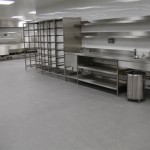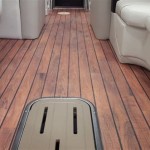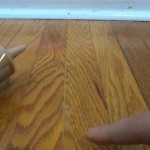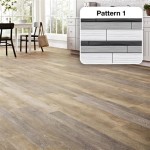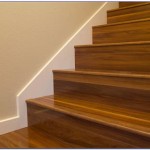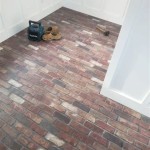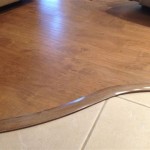How To Fix Worn Spots On Hardwood Floors
Hardwood floors, while offering durability and aesthetic appeal, are susceptible to wear and tear over time. High-traffic areas, exposure to sunlight, and accidental spills can all contribute to the development of worn spots. Addressing these imperfections promptly is essential to maintaining the floor's integrity and preventing further damage. This article will provide a comprehensive guide on how to identify, assess, and repair worn spots on hardwood floors.
The first step in addressing worn spots involves careful identification. This includes determining the type and severity of the wear, as well as the type of finish applied to the hardwood. Different types of wear will require different repair methods. For instance, a minor scuff mark might be easily remedied with a simple scratch concealer, while a deep gouge might necessitate wood filler and sanding.
The type of finish also plays a crucial role in the repair process. Surface finishes, such as polyurethane, create a protective layer on top of the wood. Penetrating finishes, such as oil-based stains, soak into the wood fibers. Knowing the type of finish is essential for selecting the appropriate repair products and ensuring a seamless blend with the existing floor.
Before proceeding with any repair, it is advisable to thoroughly clean the affected area. This will remove any dirt, dust, or debris that could interfere with the repair process. Use a soft cloth and a pH-neutral wood cleaner to gently wipe the area. Avoid using harsh chemicals or abrasive cleaners, as these can further damage the wood or the finish.
Key Point 1: Identifying and Assessing the Damage
The first key step in any repair process is to accurately identify and assess the extent of the damage. This involves distinguishing between different types of wear and tear. Common types of worn spots include:
*Scratches:
Superficial marks on the surface of the finish, typically caused by furniture or pet claws. *Scuffs:
Dull or discolored patches caused by abrasion from footwear or other objects. *Fading:
Loss of color due to prolonged exposure to sunlight. *Gouges:
Deeper indentations or chips in the wood, often caused by dropped objects. *Water Stains:
Discoloration caused by spills or leaks that have penetrated the finish. *Finish Wear-Through:
Complete removal of the finish, exposing the bare wood underneath.Once the type of damage is identified, it's essential to assess its severity. Minor scratches and scuffs can often be repaired with simple touch-up methods. However, deeper gouges, water stains, or finish wear-through may require more extensive repairs. This assessment will guide the selection of appropriate repair materials and techniques.
It's also vital to examine the surrounding area for any signs of underlying problems, such as moisture damage or structural issues. Addressing these issues first will prevent the recurrence of worn spots in the future.
Key Point 2: Choosing the Right Repair Materials
Selecting the appropriate repair materials is critical for achieving a successful and durable repair. The materials required will vary depending on the type and severity of the damage, as well as the type of finish on the floor. Common repair materials include:
*Scratch Concealer:
A pigmented product designed to fill in and disguise minor scratches on the finish. *Touch-Up Markers:
Similar to scratch concealers, but with a marker-style applicator for precise application. *Wood Filler:
A paste-like substance used to fill in deeper gouges or holes in the wood. *Sandpaper:
Used to smooth out filled areas or to prepare the surface for refinishing. Various grits are needed, ranging from coarse (for removing material) to fine (for polishing). *Wood Stain:
Used to match the color of the repaired wood to the surrounding floor. *Finish:
The final protective layer applied to the repaired area. The type of finish should match the existing finish on the floor (e.g., polyurethane, oil-based stain). *Mineral Spirits or Paint Thinner:
Used for cleaning tools and removing excess stain or finish. *Applicator Pads or Brushes:
Used for applying stain and finish. *Tack Cloth:
Used to remove dust and debris before applying finish.When selecting wood filler, it's crucial to choose a product that is compatible with the type of wood. Some wood fillers are designed for specific wood species, such as oak or maple. It's also important to consider the color of the wood filler. If necessary, the wood filler can be stained to match the existing floor.
For stains and finishes, it's essential to choose products that are compatible with the existing finish. If the existing finish is polyurethane, use a polyurethane stain and finish. If the existing finish is oil-based, use an oil-based stain and finish. Applying an incompatible finish can result in adhesion problems, discoloration, or other issues.
Key Point 3: Step-by-Step Repair Procedures
The repair procedure will depend on the type and severity of the damage. Here are some common repair procedures for different types of worn spots:
*Repairing Minor Scratches:
For superficial scratches, start by cleaning the affected area with a soft cloth and a pH-neutral wood cleaner. Apply scratch concealer or touch-up marker to the scratches, following the manufacturer's instructions. Wipe away any excess product with a clean cloth. If necessary, apply a second coat of scratch concealer or touch-up marker. Allow the product to dry completely before walking on the repaired area. *Repairing Deeper Gouges:
For deeper gouges, start by cleaning the affected area and removing any loose debris. Apply wood filler to the gouge, filling it slightly above the surface of the surrounding wood. Allow the wood filler to dry completely according to the manufacturer's instructions. Once the wood filler is dry, sand it down to be flush with the surrounding wood, starting with a coarse grit sandpaper and gradually working your way to a finer grit. Clean the sanded area with a tack cloth to remove any dust. Apply wood stain to the filled area to match the color of the surrounding floor. Allow the stain to dry completely. Apply several coats of finish to the repaired area, allowing each coat to dry completely before applying the next. Lightly sand between coats with a fine-grit sandpaper to ensure a smooth finish. *Repairing Faded Spots:
For faded spots, the best approach is often to refinish the entire floor. However, if the fading is localized, it may be possible to spot-refinish the affected area. Start by sanding the faded area and the surrounding area to create a smooth transition. Clean the sanded area with a tack cloth. Apply wood stain to the sanded area to match the color of the surrounding floor. Allow the stain to dry completely. Apply several coats of finish to the repaired area, allowing each coat to dry completely before applying the next. Lightly sand between coats with a fine-grit sandpaper to ensure a smooth finish. Blending the edges of the newly applied finish with the existing finish is critical for a seamless appearance. This may involve feathering the finish out beyond the affected area. *Addressing Water Stains:
Water stains can be challenging to remove. In some cases, they can be removed by lightly sanding the affected area and applying a wood bleach product. Follow the manufacturer's instructions carefully when using wood bleach. After bleaching, stain and finish the area as described above. For severe water stains that penetrate deep into the wood, it may be necessary to replace the affected boards.It's also crucial to consider the drying times for each product used. Allowing sufficient drying time between steps will ensure a strong and durable repair. Rushing the process can result in adhesion problems, uneven finishes, or other issues.
In addition to these specific procedures, it's important to exercise caution when using power tools, such as sanders. Wear appropriate safety gear, including eye protection and a dust mask. Work in a well-ventilated area to avoid inhaling dust or fumes. Follow the manufacturer's instructions for all tools and materials.
Proper maintenance is also key to preventing further damage. Regularly sweeping or vacuuming the floor will remove dirt and debris that can cause scratches and scuffs. Using rugs in high-traffic areas can help to protect the floor from wear and tear. Applying floor protectors to furniture legs will prevent scratches and gouges. Addressing spills promptly will prevent water stains and other types of damage.

Do You Have Mystery Marks In Your Wood Floors The Hardwood Flooring Experts Petes

Do You Have Mystery Marks In Your Wood Floors The Hardwood Flooring Experts Petes

Do You Have Mystery Marks In Your Wood Floors The Hardwood Flooring Experts Petes

How To Make Distressed Wood Floors The Craftsman Blog
Hardwood Flooring Does This Look Like Normal Wear And Tear

Do You Have Mystery Marks In Your Wood Floors The Hardwood Flooring Experts Petes

Do You Have Mystery Marks In Your Wood Floors The Hardwood Flooring Experts Petes

Uneven Shine On Polyurethane Coated Hardwood Floors

Do You Have Mystery Marks In Your Wood Floors The Hardwood Flooring Experts Petes

Elevate Your Home The Essential Guide To Hardwood Floor Refinishing
Related Posts

